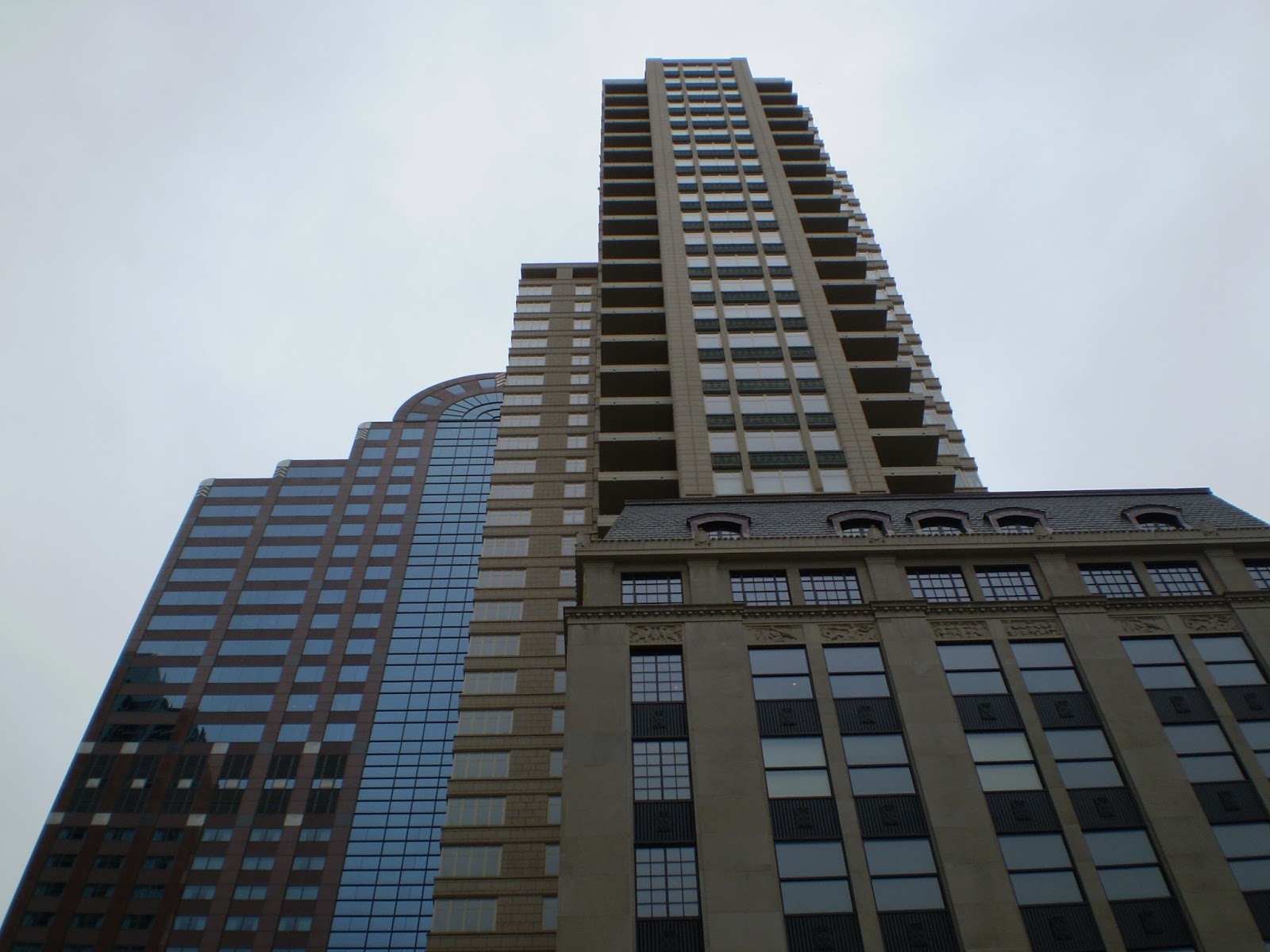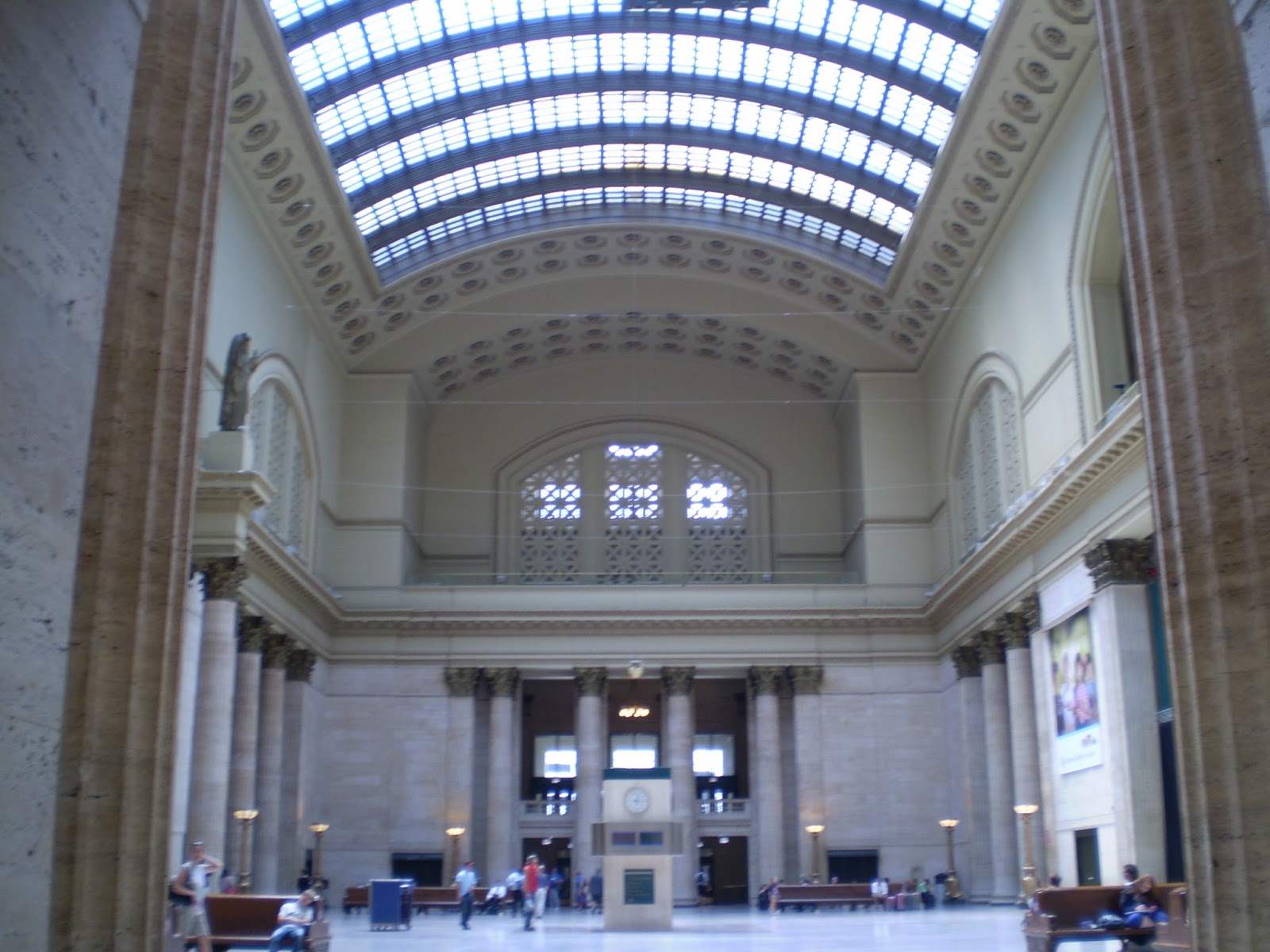Like any other US city Chicago has its share of problems, anonymous corporate
parks, blighted areas, and panhandlers.
But thanks to a certain (probably mythical) cow, it also has one of the
strongest planned downtowns of any city in America. The Great Chicago fire of 1871 destroyed nearly two
thirds of the then-existing city, and the city fathers took this as an
opportunity to establish a plan. There
are evidences of this planning everywhere.
Michigan Avenue, humbly known in the downtown area as the Magnificent
Mile, is one of the best examples. Not
because it’s a strip of all the best names in retail. New York’s 5th avenue has the same
list of pricey tenants, and both are festooned with flowers. It’s because it’s elevated! Like other areas in Chicago, there is an
upper and a lower Michigan avenue. This
is an absolutely brilliant idea! Not
only are the trucks kept below the people walkways, but the side streets are
free of the kind of congestion you see in New York, leaving them free to also be
flower-lined beauties. Here are some
examples of the flower beds along Michigan Avenue and its side streets,
including a very inventive use of old picture frames in a garden.
All the loading and unloading takes place out of sight. The lower levels are not free of people, of
course. There are shortcuts the locals
know in this dim underworld that are not on the maps, which show the surface
streets. There are also upper levels in
the condominium developments south of the river that are also not on the map. They tripped me up a couple of times coming
north from Millennium Park. It is,
however, a great walking city, and I logged over fifteen miles during my stay
(some of it, as I say, inadvertently).
Chicago is justly famous for its wide range of architectural
styles, so much so that there are dozens of boat tours on the Chicago River on
which volunteers from the Architectural Institute deliver talks about the many
examples visible from the river. I’ve included a numbers of examples below,
both from the boat tour (I took the First Lady of Chicago boat seen below, but there are
many others) and from my walks. Of
course I can’t tell you I remember the various style descriptions or the
architects involved, but I think the pictures speak for themselves.
I wanted to highlight one building in particular from the
tour, called 300 Riverside. It is a
strikingly curved design as you see as I captured it from the river, but it’s never
more striking than when viewed from above from the observation deck of the Willis Tower with the
Chicago River reflecting off its curved face.
Chicago is a city that keeps its beautiful buildings. Here, for example, is Union Station, which is
what New York’s Pennsylvania Station would look like if New Yorkers hadn’t torn
it down to build Madison Square Garden.
And finally, this Mosque-like structure was actually next to
my hotel. Turns out it was a Shriner’s
Temple built in the early 1900’s, which has now been repurposed into a
Bloomingdales.
There are a large selection of trains available to get you
around the city, and some are the famous elevated trains. They are identified by color, rather than
using letters or numbers, and four of them pass around the ‘loop’. Literally an elevated oval that makes it easy
to quickly get across the business area.
I used the red, pink, green and brown lines at various times. Here is a link to the route map and a shot of one of the
streets under the El.




















No comments:
Post a Comment